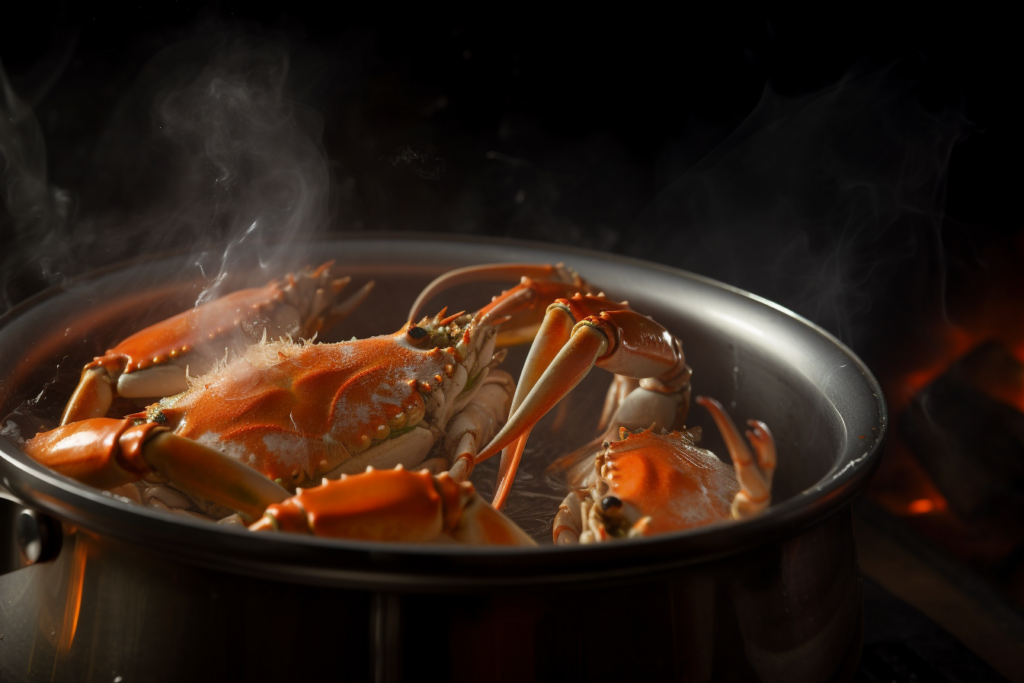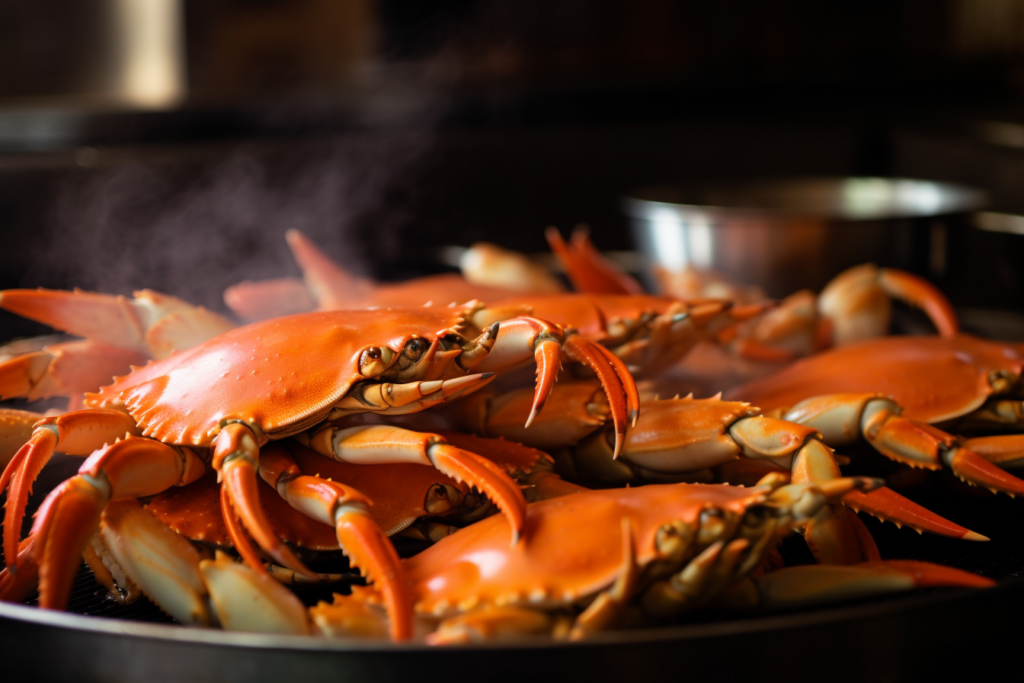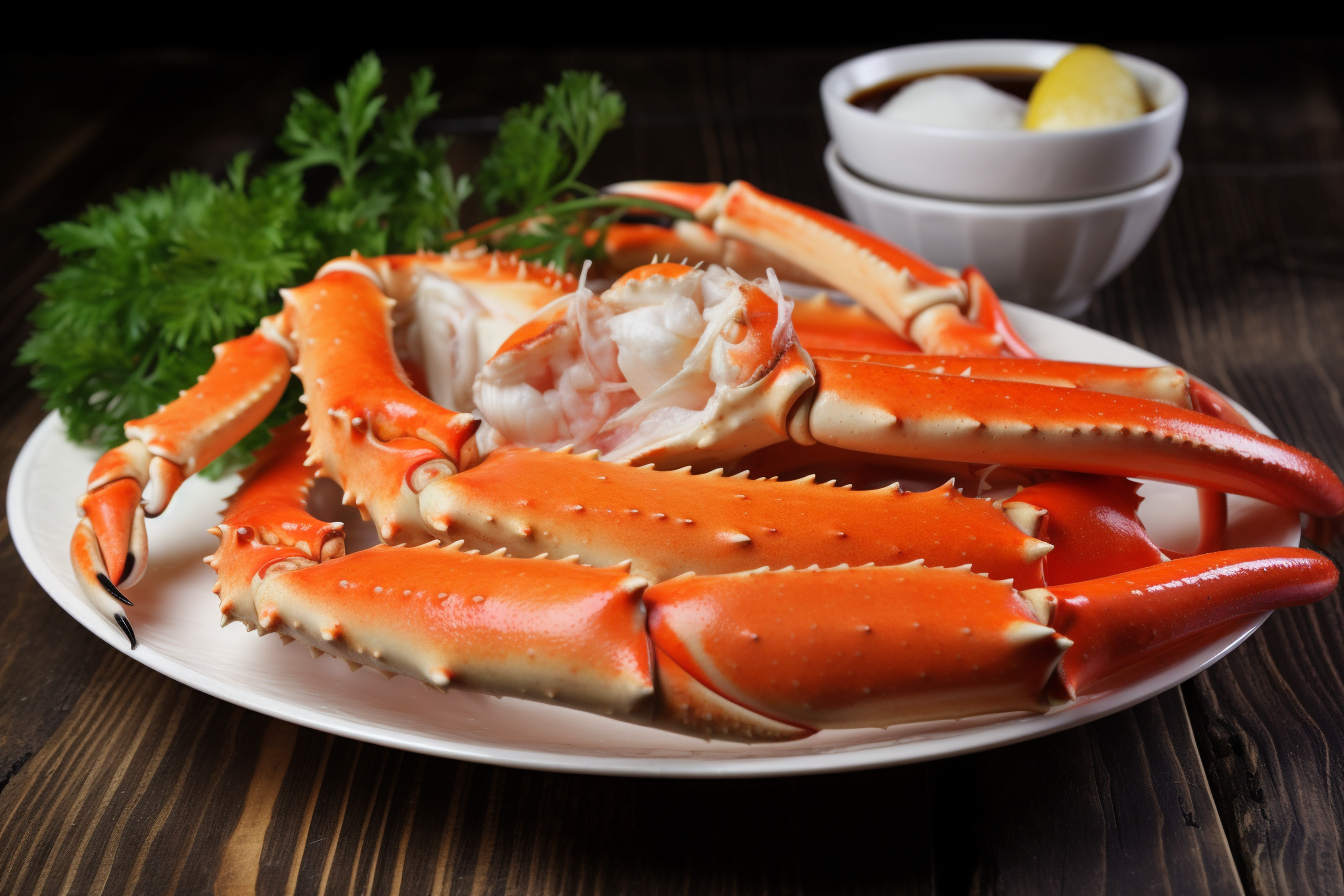Hello readers, today we are gonna take a ride to the endless joy with our special as well as simple boiled crab leg recipe which is not only an easy one but delicious as well. This boiled crab legs recipe is rich and decadent yet simple at home. The sweet and tender crab meat dipped in garlic butter, is perfect for entertaining family and friends who will love this easy seafood recipe.
“Boiled crab legs are an indulgent and delicious seafood variety when dining out. However, you can easily make this treat at home without intimidation. In this post, I will show you how to prepare your own boiled crab legs.”
Since crab meat has a naturally sweet and delicate flavor, seasoning crab legs is simply a matter of enhancing, not overpowering, that taste.
Boiling them in beer and Old Bay infuses the shell, but the meat absorbs little. You could boil crab legs in plain water and they would still be delicious. The best sauces complement the crab’s flavor rather than compete with it. For an optimal dipping sauce, serve it with Campfire Sauce and sometimes with Mayonnaise Salad Dressing.
What Is Boiled Crab Leg?
Pre-cooked, flash-frozen crab legs from your local seafood market or grocery store make enjoying tender, sweet crab at home easy and affordable. Simply boil the frozen legs for a few minutes to heat them through.
For extra flavor, add cajun seasoning or Old Bay to the pot instead of plain salt. With minimal effort, you can have restaurant-quality crab legs at half the price.
Overview: How To Boil Crab Legs?

This recipe gives a simple method for cooking tasty crab legs on the stovetop. First, thaw the crab legs if frozen, either overnight in the fridge or under cold running water for faster thawing. Once thawed, rinse thoroughly to remove ice crystals and debris. Then, fill a large pot with salted water and bring to a rolling boil.
Add the crab legs to the pot carefully, submerging them fully. Boil for 4-6 minutes, just until heated through. Overcooking makes the crab meat tough and chewy, so watch the time.
While the crab legs boil, prepare any side dishes or sauces to serve with them. Boiling the legs briefly ensures tender, flavorful crab, perfect for a delicious seafood meal.
Other Crab Recipes You May Love!
Boil Crab Legs Recipe
Equipment
- Large Pot
- Tongs or slotted spoon
- Serving Platter
- Clean towel (optional)
Ingredients
- 2 lbs Crab legs (fresh or frozen)
- Water
- 1 tbsp Salt
- Lemon
- Melted butter
Instructions
- Thaw crab legs in refrigerator overnight or under cold running water.
- Rinse thawed crab legs to remove ice crystals and debris.
- Fill a large pot with water and salt, bring to a boil.
- Gently add crab legs to boiling water, fully submerge them.
- Boil crab legs for 4-6 minutes until heated through, avoid overcooking.
- Using tongs or slotted spoon, remove crab legs from pot.
- Transfer crab legs to a serving platter, pat dry if desired.
- Serve immediately with melted butter and lemon wedges for squeezing.
Nutrition
Some Alternate Methods to Cook This Recipe!
Steamed crab legs: Steaming is an ideal cooking method for crab legs, gently preserving their sweet, tender meat. The legs are placed in a steamer basket or pot over boiling water. As steam rises and surrounds the crab, it gently cooks the meat, keeping it moist and naturally flavorful. The delicate taste of the crab shines through without being overpowered. Steamed crab legs are often served with melted butter and lemon wedges for a simple, satisfying dish.
Fried Crab Legs: Fried crab legs make for a mouthwatering seafood dish. The tender crab meat is coated in a crispy, golden batter and deep-fried to perfection, offering a delightful contrast of textures. The crunchy exterior gives way to succulent, flavorful meat inside. Enjoyed as an appetizer or entree, these irresistible crab legs promise to satisfy seafood lovers. Paired with a flavorful dipping sauce, they provide a savory culinary experience with each indulgent bite.
Grilled Crab Legs: Grilling crab legs adds a smoky and charred flavor to the tender crab meat, creating a unique and flavorful dish. By cooking the crab legs over medium heat on the grill, you can achieve delicious caramelization and grill marks, enhancing their visual appeal and taste. Grilled crab legs are perfect for outdoor cooking and summer barbecues, offering a fun and creative way to enjoy seafood. Serve them with your favorite dipping sauce and grilled vegetables for a complete and satisfying meal.
Smoked crab legs: Smoked crab legs are a gourmet seafood option, infused with a rich, smoky flavor that enhances the sweet crab meat. Slow-smoking the legs over a low heat with wood chips adds depth and complexity, complementing the delicate crab. Served as an appetizer or entrée with dipping sauces and sides, smoked crab legs provide a memorable meal for seafood aficionados seeking an elevated dining experience.
Baked Crab Legs: Baked Crab Legs are a luxurious and festive dish, with a rich, sweet flavor reminiscent of lobster. For those who enjoy seafood, crab is a real treat. Simply baked, these pre-cooked crab legs are an easy and delicious meal to make at home for holidays or special occasions. The natural sweetness of the tender crab meat shines when gently warmed in the oven.
What to Pair with The Boiled Crab Legs Recipe!

Storing and Managing Leftovers!
Storing:
- After the crab legs have boiled, let them cool to room temperature.
- Put the crab legs that are left in a sealed container or a plastic bag that may be sealed.
- You can keep them for up to two or three days in the fridge.
Warming Up:
- Reheating crab legs requires a gentle steaming over boiling water for approximately five to seven minutes, or until well heated.
- Another option is to heat them in the microwave for one or two minutes on high, covered with a wet paper towel, on a microwave-safe plate.
- The crab meat can become tough and rubbery if cooked for too long.
Tips for Serving:
- Warm up some butter and garnish the warmed crab legs with some lemon wedges.
- To make it taste even better, think about adding some more herbs or seasoning.
- For a full dinner, pair with a fresh salad, steaming veggies, or some crusty bread.
Frequently Asked Questions (FAQs)
Q: Should I rinse the crab legs after thawing?
A: Yes, it’s a good idea to rinse them to remove any ice crystals or debris that may have accumulated during the thawing process.
Q: How much salt should I add to the boiling water?
A: Use around 1 tablespoon of salt per quart of water. This helps to season the crab legs as they boil.
Q: How do I know when the crab legs are done boiling?
A: Boil them for 4-6 minutes until they are heated through. You can check by gently pulling at the shell; the meat should be warm.
Q: Can I skip patting the crab legs dry before serving?
A: It’s optional, but patting them dry with a clean towel can help remove excess moisture, ensuring a better presentation and preventing any water from diluting the flavors.
Q: How do I prevent the crab legs from splashing when adding them to the boiling water?
A: Gently lower them into the water using tongs or a slotted spoon to avoid splashing and potential burns.

